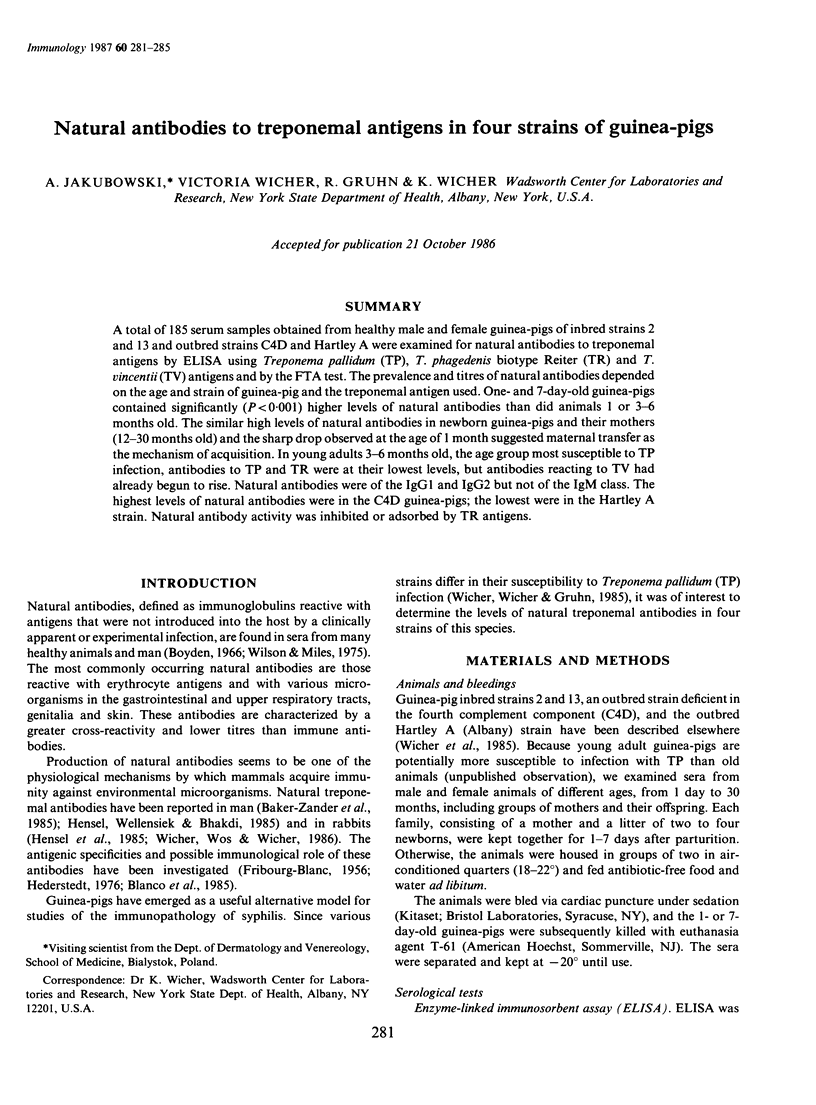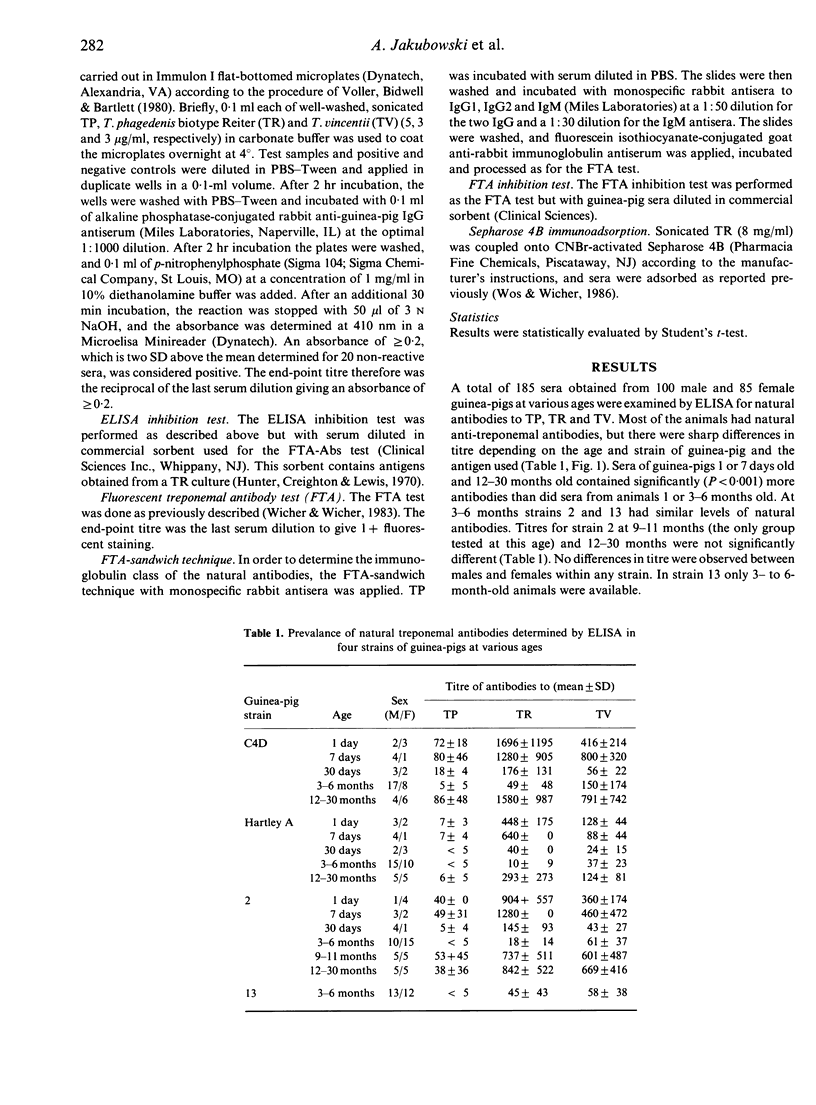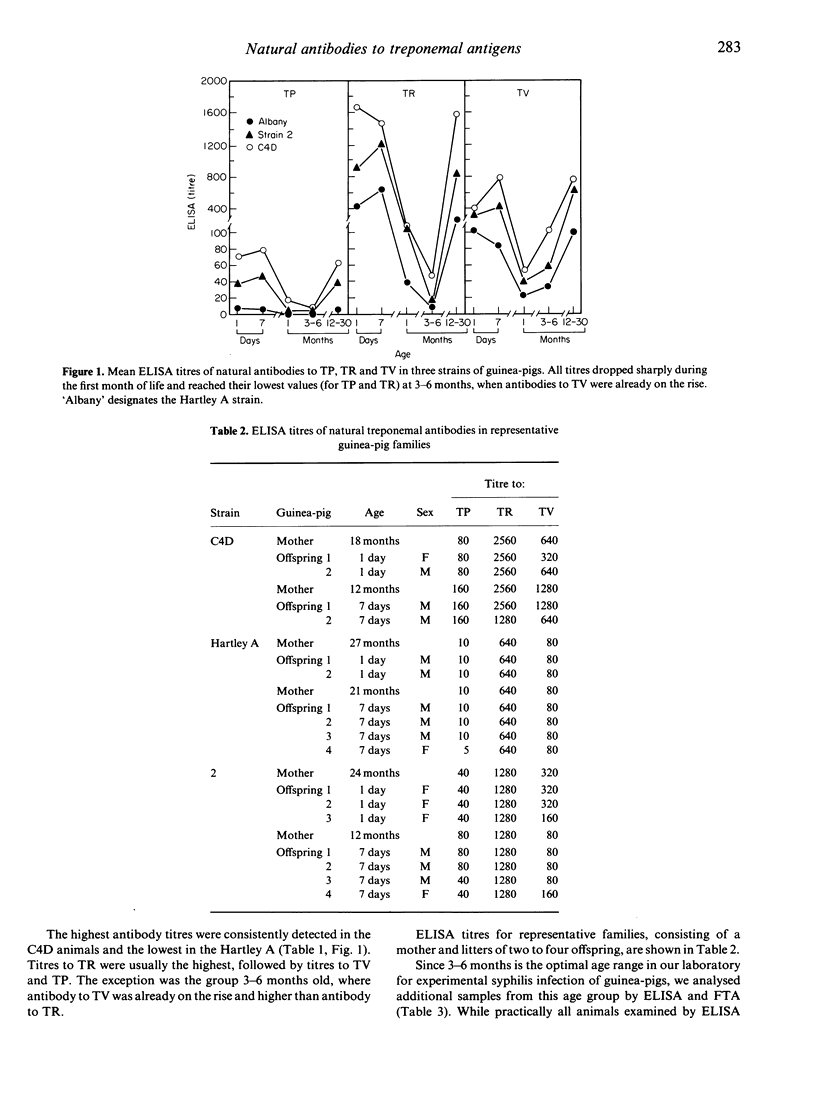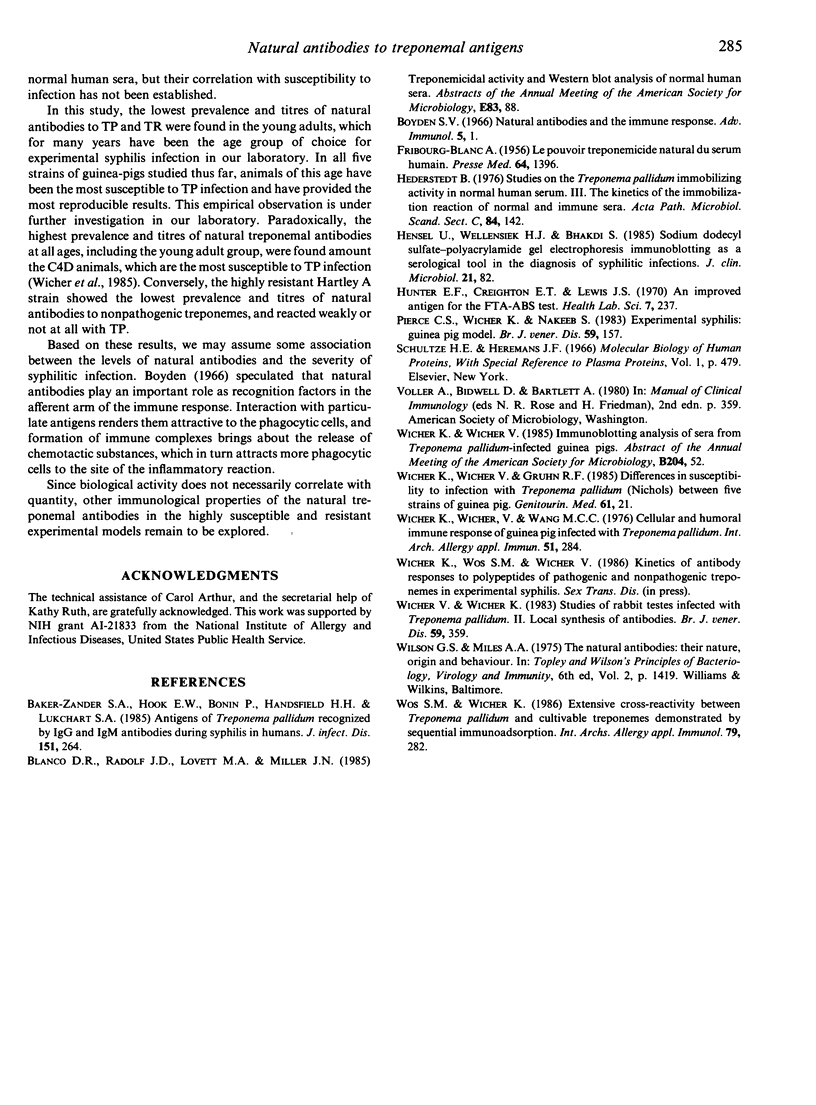Abstract
A total of 185 serum samples obtained from healthy male and female guinea-pigs of inbred strains 2 and 13 and outbred strains C4D and Hartley A were examined for natural antibodies to treponemal antigens by ELISA using Treponema pallidum (TP), T. phagedenis biotype Reiter (TR) and T. vincentii (TV) antigens and by the FTA test. The prevalence and titres of natural antibodies depended on the age and strain of guinea-pig and the treponemal antigen used. One- and 7-day-old guinea-pigs contained significantly (P less than 0.001) higher levels of natural antibodies than did animals 1 or 3-6 months old. The similar high levels of natural antibodies in newborn guinea-pigs and their mothers (12-30 months old) and the sharp drop observed at the age of 1 month suggested maternal transfer as the mechanism of acquisition. In young adults 3-6 months old, the age group most susceptible to TP infection, antibodies to TP and TR were at their lowest levels, but antibodies reacting to TV had already begun to rise. Natural antibodies were of the IgG1 and IgG2 but not of the IgM class. The highest levels of natural antibodies were in the C4D guinea-pigs; the lowest were in the Hartley A strain. Natural antibody activity was inhibited or adsorbed by TR antigens.
Full text
PDF




Selected References
These references are in PubMed. This may not be the complete list of references from this article.
- Baker-Zander S. A., Hook E. W., 3rd, Bonin P., Handsfield H. H., Lukehart S. A. Antigens of Treponema pallidum recognized by IgG and IgM antibodies during syphilis in humans. J Infect Dis. 1985 Feb;151(2):264–272. doi: 10.1093/infdis/151.2.264. [DOI] [PubMed] [Google Scholar]
- Boyden S. V. Natural antibodies and the immune response. Adv Immunol. 1966;5:1–28. doi: 10.1016/s0065-2776(08)60271-0. [DOI] [PubMed] [Google Scholar]
- FRIBOURG-BLANC A. Le pouvoir tréponémicide naturel du sérum humain. Presse Med. 1956 Aug 11;64(60):1396–1397. [PubMed] [Google Scholar]
- Hederstedt B. Studies on the Treponema pallidum immobilizing activity in normal human serum. 3. The kinetics of immobilization reaction of normal and immune sera. Acta Pathol Microbiol Scand C. 1976 Apr;84(2):142–147. doi: 10.1111/j.1699-0463.1976.tb00012.x. [DOI] [PubMed] [Google Scholar]
- Hensel U., Wellensiek H. J., Bhakdi S. Sodium dodecyl sulfate-polyacrylamide gel electrophoresis immunoblotting as a serological tool in the diagnosis of syphilitic infections. J Clin Microbiol. 1985 Jan;21(1):82–87. doi: 10.1128/jcm.21.1.82-87.1985. [DOI] [PMC free article] [PubMed] [Google Scholar]
- Hunter E. F., Creighton E. T., Lewis J. S. An improved antigen for the FTA-ABS test. Health Lab Sci. 1970 Oct;7(4):237–241. [PubMed] [Google Scholar]
- Pierce C. S., Wicher K., Nakeeb S. Experimental syphilis: guinea pig model. Br J Vener Dis. 1983 Jun;59(3):157–168. doi: 10.1136/sti.59.3.157. [DOI] [PMC free article] [PubMed] [Google Scholar]
- Wicher K., Wicher V., Gruhn R. F. Differences in susceptibility to infection with Treponema pallidum (Nichols) between five strains of guinea pig. Genitourin Med. 1985 Feb;61(1):21–26. doi: 10.1136/sti.61.1.21. [DOI] [PMC free article] [PubMed] [Google Scholar]
- Wicher K., Wicher V., Wang M. C. Cellular and humoral immune response to guinea pig infected with Treponema pallidum. Int Arch Allergy Appl Immunol. 1976;51(3):284–297. doi: 10.1159/000231603. [DOI] [PubMed] [Google Scholar]
- Wicher V., Wicher K. Studies of rabbit testes infected with Treponema pallidum. II Local synthesis of antibodies. Br J Vener Dis. 1983 Dec;59(6):359–363. doi: 10.1136/sti.59.6.359. [DOI] [PMC free article] [PubMed] [Google Scholar]
- Wos S. M., Wicher K. Extensive cross reactivity between Treponema pallidum and cultivable treponemes demonstrated by sequential immunoadsorption. Int Arch Allergy Appl Immunol. 1986;79(3):282–285. doi: 10.1159/000233987. [DOI] [PubMed] [Google Scholar]


